From petite cherries to massive heirloom slicing tomatoes, there are tons of tasty tomatoes to try growing in your garden. But if you’re interested in food preservation, some tomato types are better for canning than others.
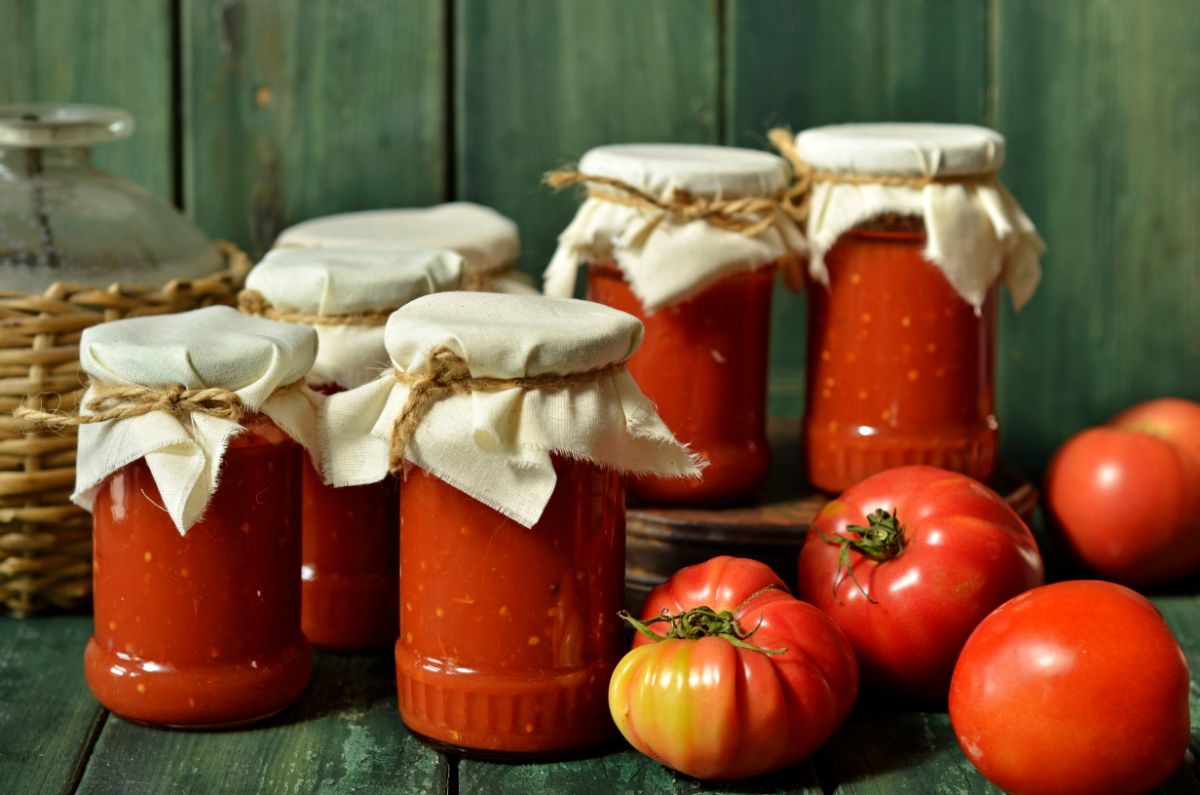
Cherry tomatoes are often the most popular tomato types for fresh snacking and they are known for freezing well.
Heirloom tomatoes are perfect for slicing up into fresh tomato sandwiches and they’re also great for dehydrating.
But if you’re interested in canning, most often the best tomatoes to grow are plum tomatoes.
Plum tomatoes have the ideal meat to skin ratio for making canned sauces and other preserved foods. Not only that, but plum tomatoes often have fewer seeds and thicker skins, which makes them easier to peel and process with water bath canning. Their uniform size and meaty flesh adds to their charm and ensures your canned product has a delicious and concentrated tomato flavor.
In this guide, we’ll discuss the best tomato varieties for canning. Due to their texture and low seed content, most of the tomato types we’ve chosen are plum tomatoes, but we’ve thrown in a few other tomato types that can well. We’ve also included some suggestions on how to preserve your tomato harvest if you’re looking for recipe inspiration.
So, if you’re ready to grow the best tomatoes for canning, read on. An unforgettable homemade pasta sauce is just a growing season away!
Jump to:
- 15 best tomato varieties for canning
- 1. Amish Paste
- 2. Roma VF
- 3. San Marzano
- 4. Big Mama
- 5. Fresh Salsa
- 6. Costoluto Genovese
- 7. Bonny Best
- 8. Golden Fresh Salsa
- 9. Biltmore
- 10. Bradley
- 11. Grandma Mary’s
- 12. Hog Heart
- 13. Orange Icicle
- 14. Red Rosso Sicilian
- 15. Super Italian Paste
- Our favorite ways to can tomatoes
- Frequently asked questions
- Summary
15 best tomato varieties for canning

Below are our top picks for the best tomatoes for canning. While these tomatoes preserve well, they are all dual purpose plants, which can be eaten fresh too. Just because you’re growing canning tomatoes doesn’t mean you can’t dice them up into tacos or slice them onto fresh garden salads!
We’ve added both indeterminate and determinate tomato types, but some growers may choose to only grow determinate tomatoes for canning. This is because determinate tomatoes produce their harvest all at once, which can streamline the canning process. Indeterminate tomatoes, on the other hand, are excellent for small batch canning, as they produce a smaller tomato harvest all season long.
1. Amish Paste
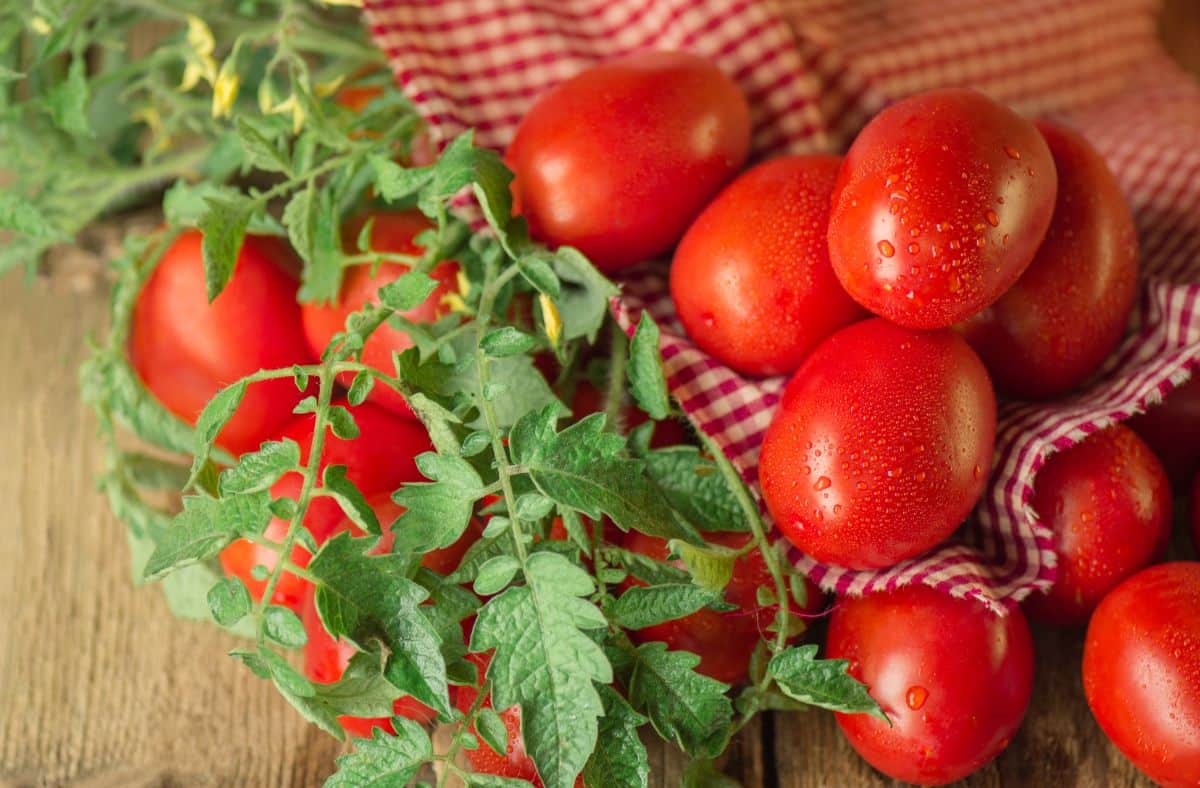
First developed in the 19th century, Amish paste hails from the Amish communities of Lancaster, Pennsylvania and Wisconsin. Packed full of flavor, these tomatoes are slightly irregularly shaped – some shaped like teardrops, while others tending more towards an oxheart look. The perfect size for canning, these flavorful tomatoes are ideal for slicing up and eating fresh too!
The meaty flesh works well in salsas and sauces and has a slight sweetness to it that will elevate many other dishes. Plants begin fruiting about 85 days after transplanting and should be staked for proper growth. If you’re interested in saving seeds, be sure to plant these tomatoes at least 10’ away from other tomato varieties to keep their heirloom genes going strong.
2. Roma VF

While there are different Roma varieties available, the “VF” in this cultivar’s name refers to the fact that this seed type is resistant to verticillium wilt and fusarium wilt. That’s great news if your tomato patch suffered from wilt last year, as you won’t need to worry about it again with these hardy plants!
An open-pollinated tomato variety, Roma VF is a determinate grower, meaning it will produce most of its tomatoes in a short period of time. That makes this an excellent choice come canning season, as you’ll be able to get all of your canning done at once. Even so, this plant type does best when staked or caged and it can grow in a smaller 2’ diameter pot if you’re working with a limited space.
3. San Marzano

Some canners say San Marzano is the only tomato type worth growing. This centuries-old classic originally comes from Italy and, while its flavor may not be quite the same when grown outside of the volcanic soils around Mt. Vesuvius, it is a mouth-watering tomato variety, nonetheless.
With extra sweet and low acid flavor, these paste tomatoes are ideal for sauce making, but they are tasty in salsas or when sliced fresh too. San Marzanos also have minimal seeds, meaty flesh and a delightful teardrop shape that’s sized just right for canning. These tomatoes freeze well and develop a deep, rich flavor when roasted too.
As indeterminate growers, San Marzanos should be staked to keep them from growing too wild and to support their heavy fruit load. They will also produce tomatoes throughout the growing season, so they are well-suited for small batch canning. Many varieties in the United States are resistant to most wilt strains.
4. Big Mama
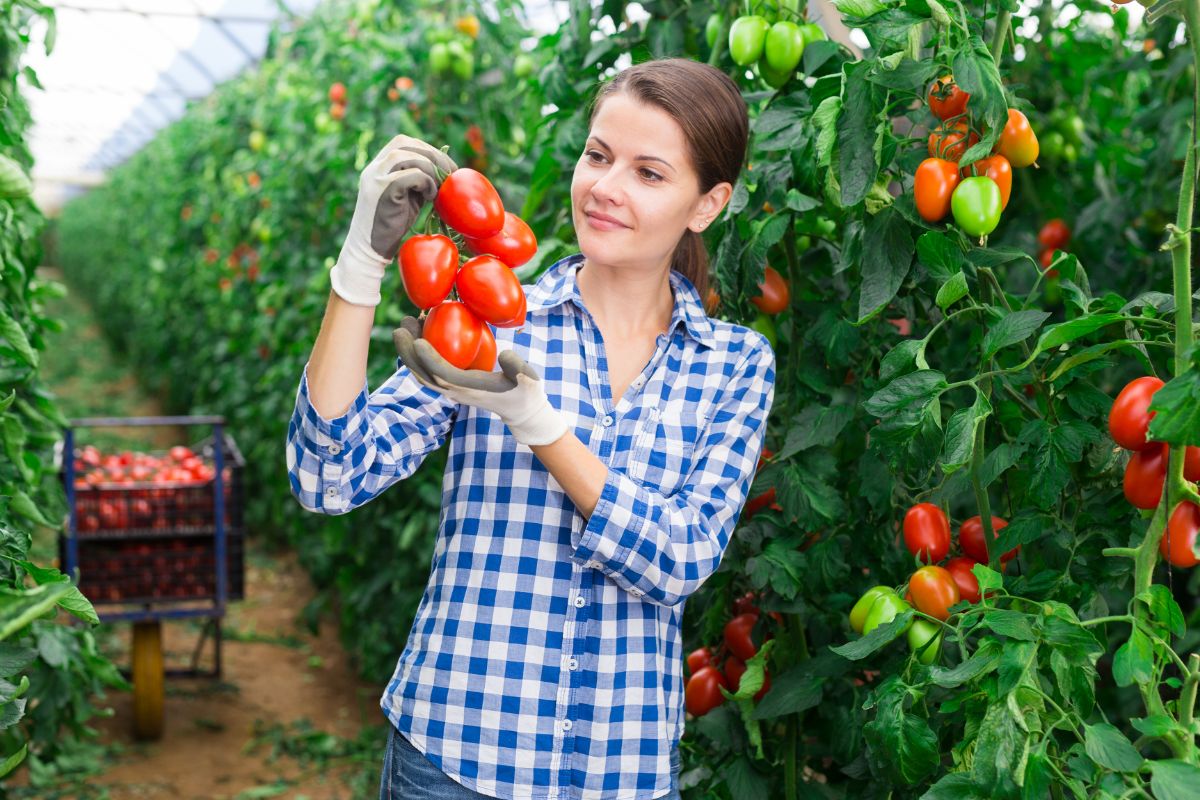
If you love canning with plum tomatoes, but hate the hassle of removing the skins from pint-sized fruit, Big Mama tomatoes are the solution. While they may look like standard plum tomatoes at first, fruit is significantly bigger, weighing in at around 10 ounces per tomato. Their large size and thick skins makes them a breeze to work with during canning time!
With a low moisture content and small seed cavity, these tomatoes make tasty salsas and soups too. Plants begin fruiting about 80 days after transplanting and are easy to work with. Just keep in mind that these hefty plants will need to be secured in the garden with heavy duty stakes to keep them from taking over.
5. Fresh Salsa
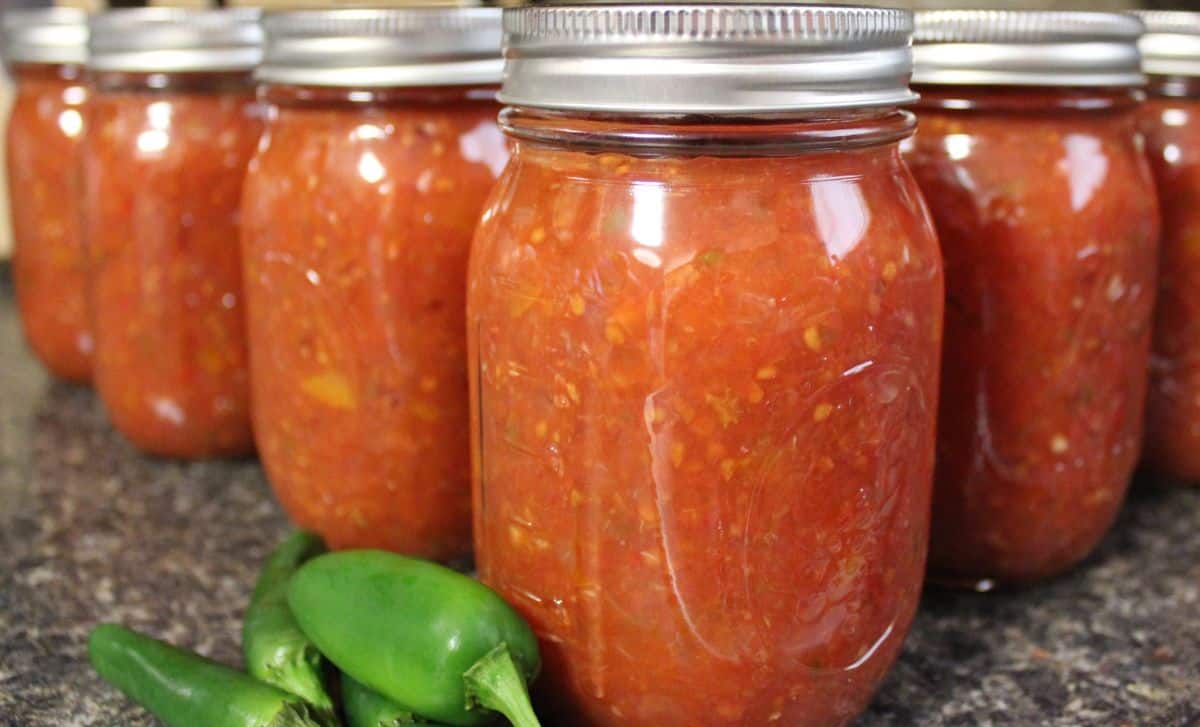
As their implies, Fresh Salsa tomatoes are hard to beat when it comes to homemade salsa making. These hybrid plum tomatoes produce oversized fruit that’s not quite as large as Big Mama’s, but still big. Dense flesh and small seed cavities simplify the canning process, and the meat maintains its solid texture and sweetness, even when diced up.
A determinate tomato, expect fruit production to begin about 65 days after transplanting. These tomato plants also stay quite small, maxing out at about 4’ tall, so they are well suited to small growing spaces and container planting.
6. Costoluto Genovese
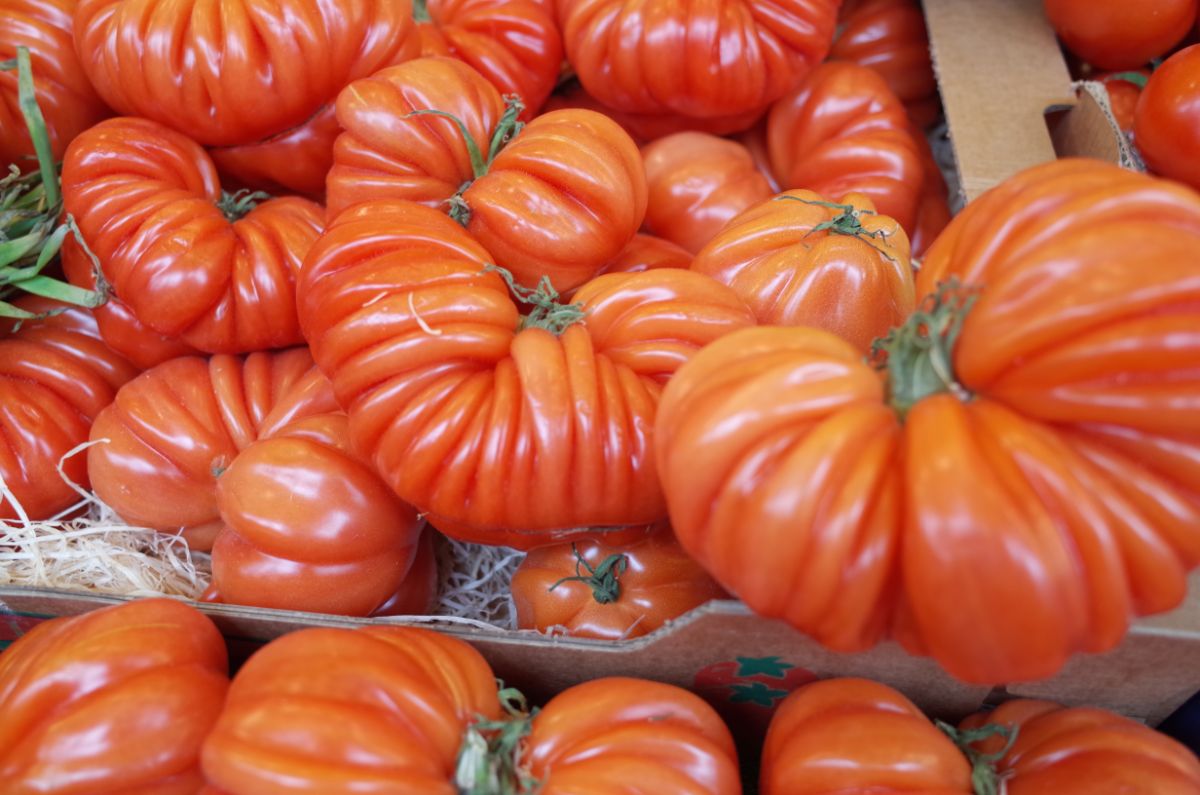
Like San Marzanos, Costoluto Genovese are classic heirloom tomatoes with dense meat and a rich flavor. A favorite of U.S. president Thomas Jefferson, this centuries-old tomato type is sweet enough to slice up on sandwiches and burgers, but the high acid content and distinct flavor makes it well-suited for canning too.
While plum tomatoes tend to be the tomato type most home preservers prefer for canning, Costoluto Genovese’s are larger heirloom tomatoes with deeply lobed flesh. An indeterminate type, these tomatoes begin fruiting about 80 days after transplanting and continue producing a sizeable harvest throughout the growing season. Seeds are also easy to save for next year’s garden or for sharing with friends!
7. Bonny Best
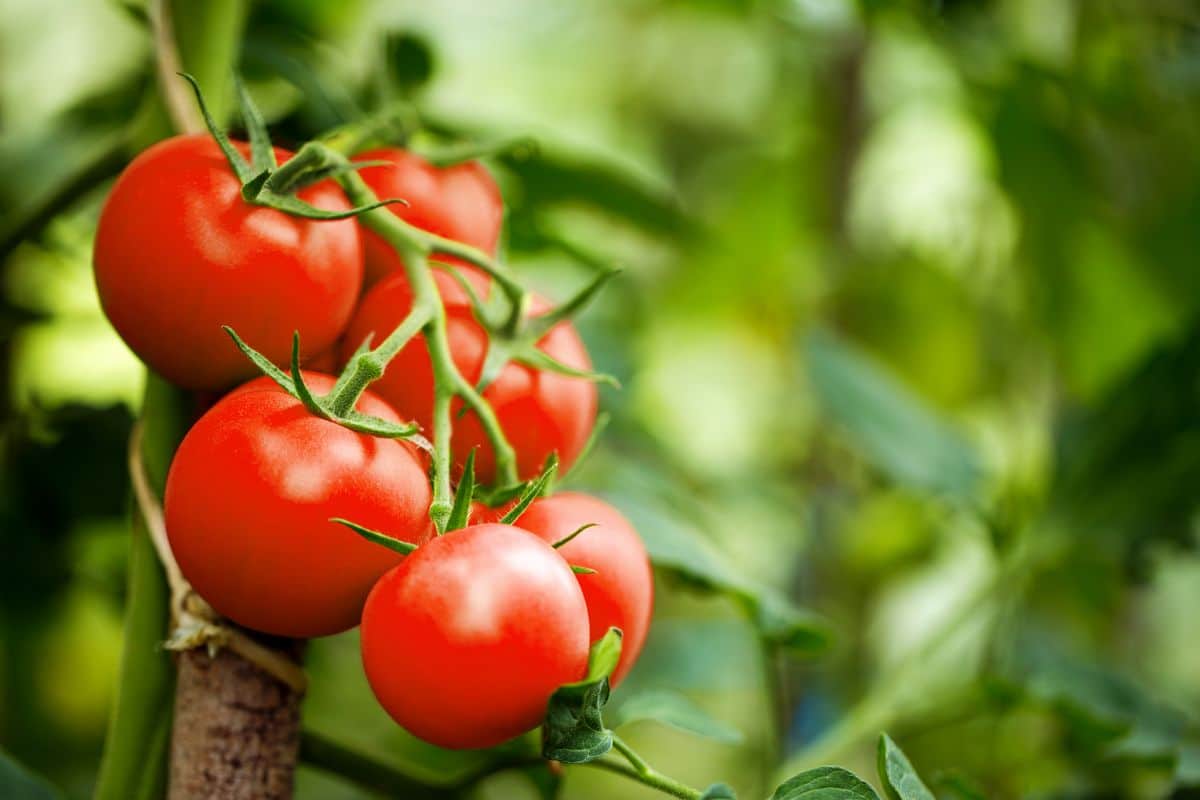
First developed in 1908, Bonny Best is a perfect dual-purpose tomato. Throughout the growing season it produces reliably, with round and firm fruit weighing in at between 6 to 8 ounces. These tomatoes are ideal for slicing and eating fresh, but the uniformly sized fruit is wonderful in canned goods too.
A good tomato variety for cooler climates, expect your Bonny Best to start fruiting about 80 to 85 days after transplanting. Mature plants grow to about 4 to 6’ in height and should be staked for best results.
8. Golden Fresh Salsa
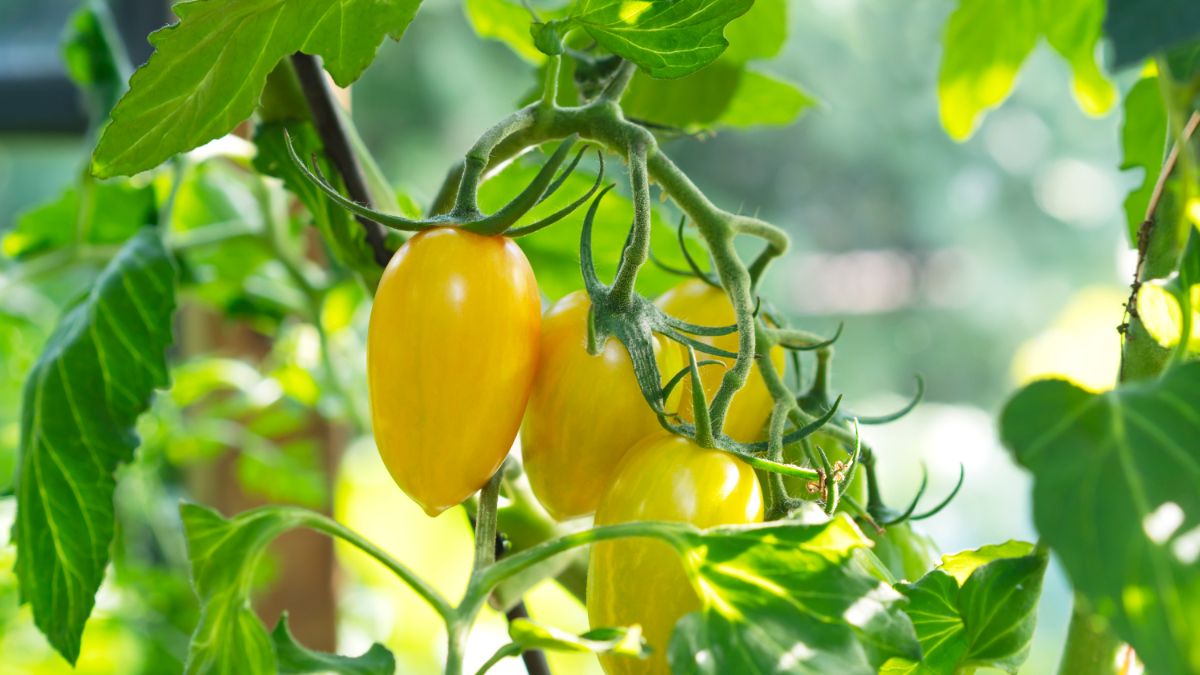
Like the Fresh Salsa tomato variety, Golden Fresh Salsa produces a meaty and low moisture fruit about 70 days after planting. Fruit maintains its texture well, even after dicing -- but the true reason to grow this plant is its color. While most canning tomatoes are red, Golden Fresh Salsa has a warm golden hue to add more color to your pantry.
If you grow this tomato type, try out golden pasta sauces or liven up fresh-made salsas. A determinate tomato variety, Golden Fresh Salsa produces tomatoes all at once. So, make sure your canning equipment is ready when fruit begins to appear!
9. Biltmore
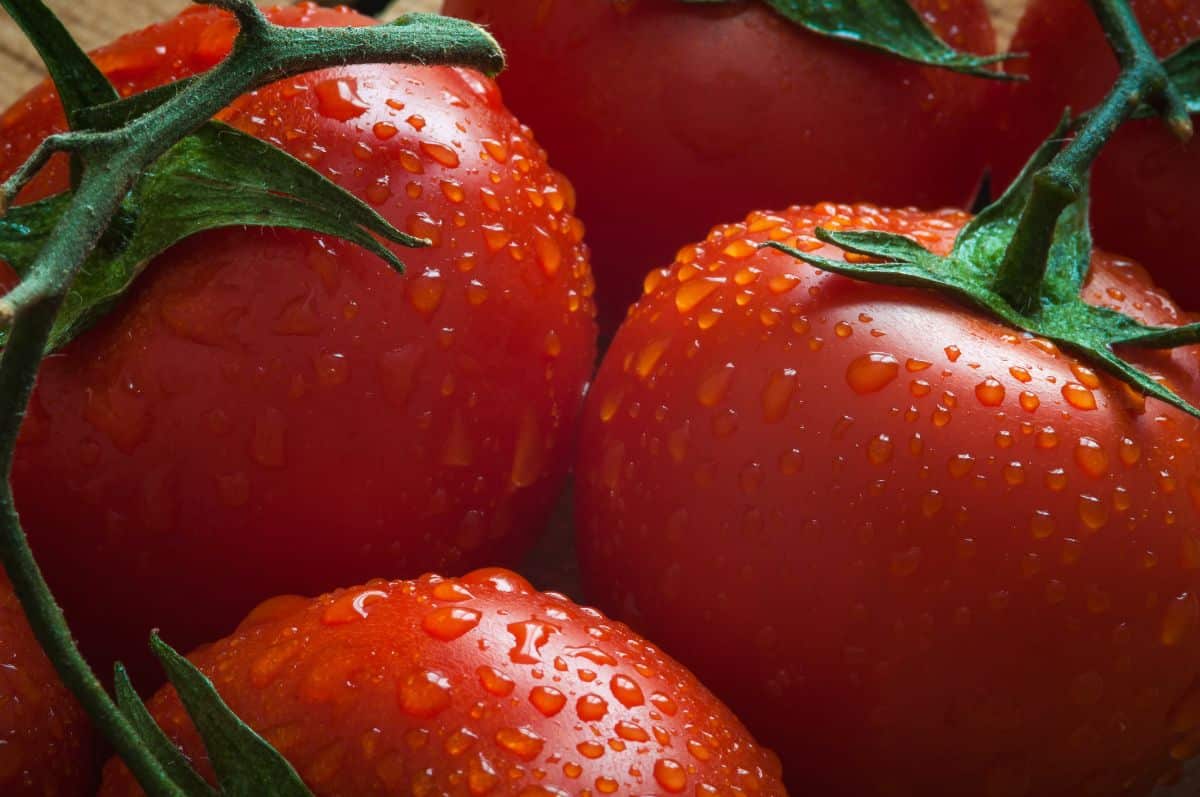
There are so many reasons to grow Biltmores. These hardy plants are resistant to many tomato diseases and they produce a large and reliable harvest that matures in a short period of time. These plants also mature faster than many other canning tomato types, with fruit appearing about 68 days after transplanting.
A smaller tomato type, Biltmores max out at about 4’ in height, but their heavy fruit load means they should be staked regardless. Perfect patio plants, Biltmore tomatoes have smooth and rounded shapes and a deep red color.
10. Bradley
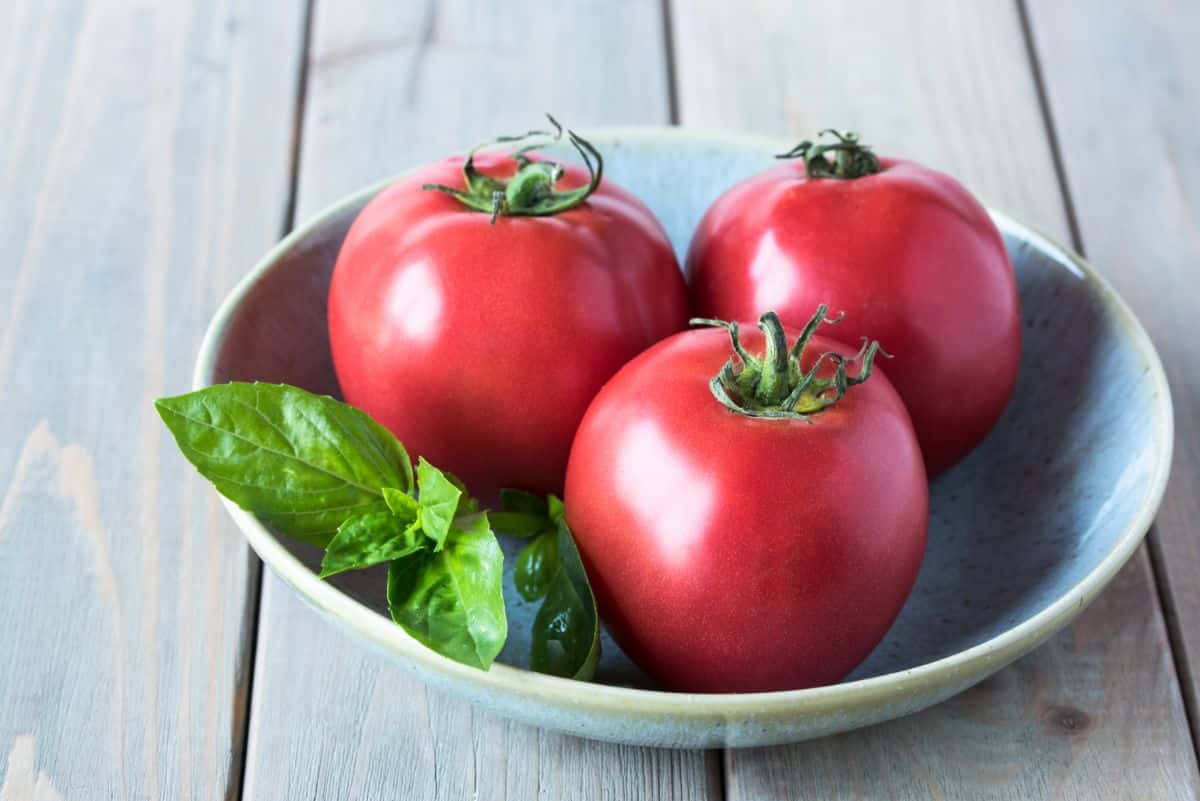
A less traditional canning tomato, but a delightful one, Bradley produces round, pink fruit that is just right for fresh eating or sauce making. First developed by the University of Arkansas, Bradley tomatoes begin fruiting about 80 days after transplant. They are also resistant to a number of common diseases, including fusarium wilt, gray leaf spot and Alternaria stem canker.
A semi-determinate tomato, Bradley’s harvesting window is shorter than some indeterminate tomato types, but that can mean greater efficiency with your home canning. For best results, use sturdy stakes with this plant and it should continue fruiting right up until frost.
11. Grandma Mary’s
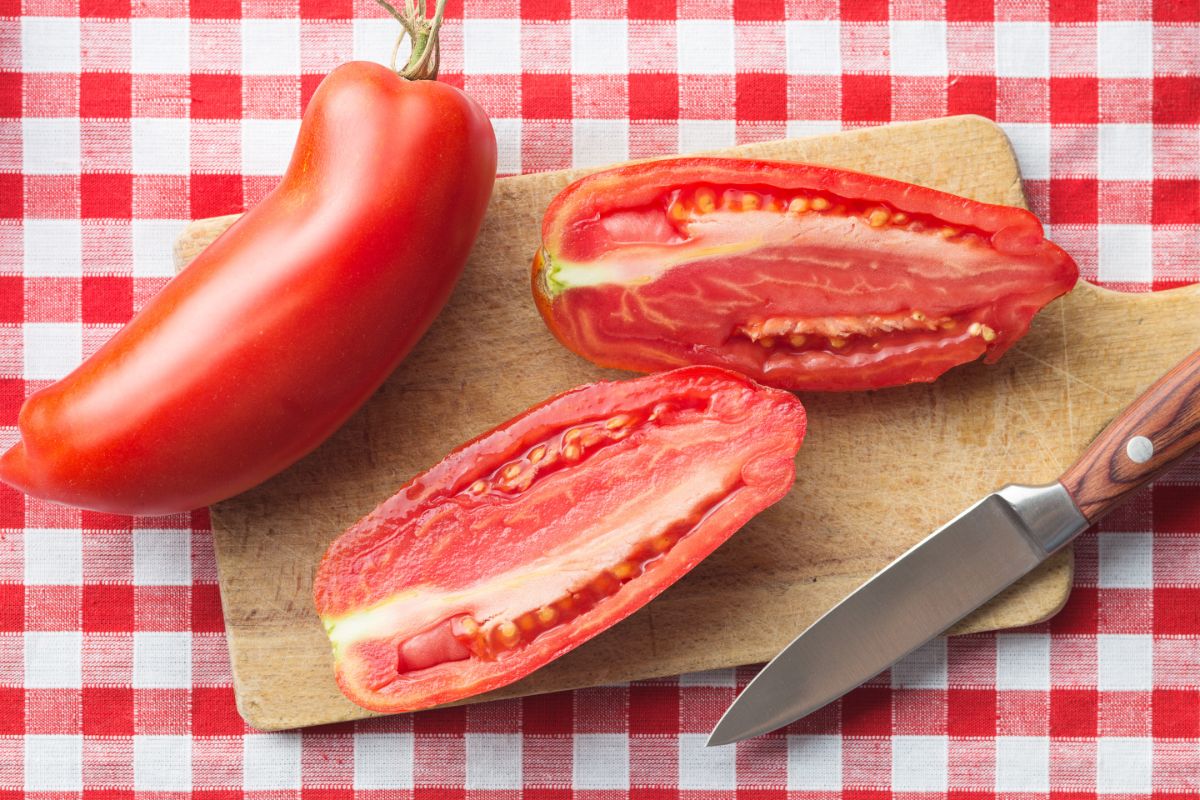
An heirloom paste tomato with a meaty texture and delicious flavor, Grandma Mary’s have been selected for their early producing and sizeable fruit. Oblong tomatoes have minimal seeds and nice, thick flesh that makes them easy to work with. An indeterminate grower, these plants should be staked and will produced throughout the growing season.
Once transplanted, Grandma Mary’s should begin fruiting in about 68 days. These hardy plants also produce reliably, even during cool summers. So, they’re a solid choice if you live in a colder region.
12. Hog Heart
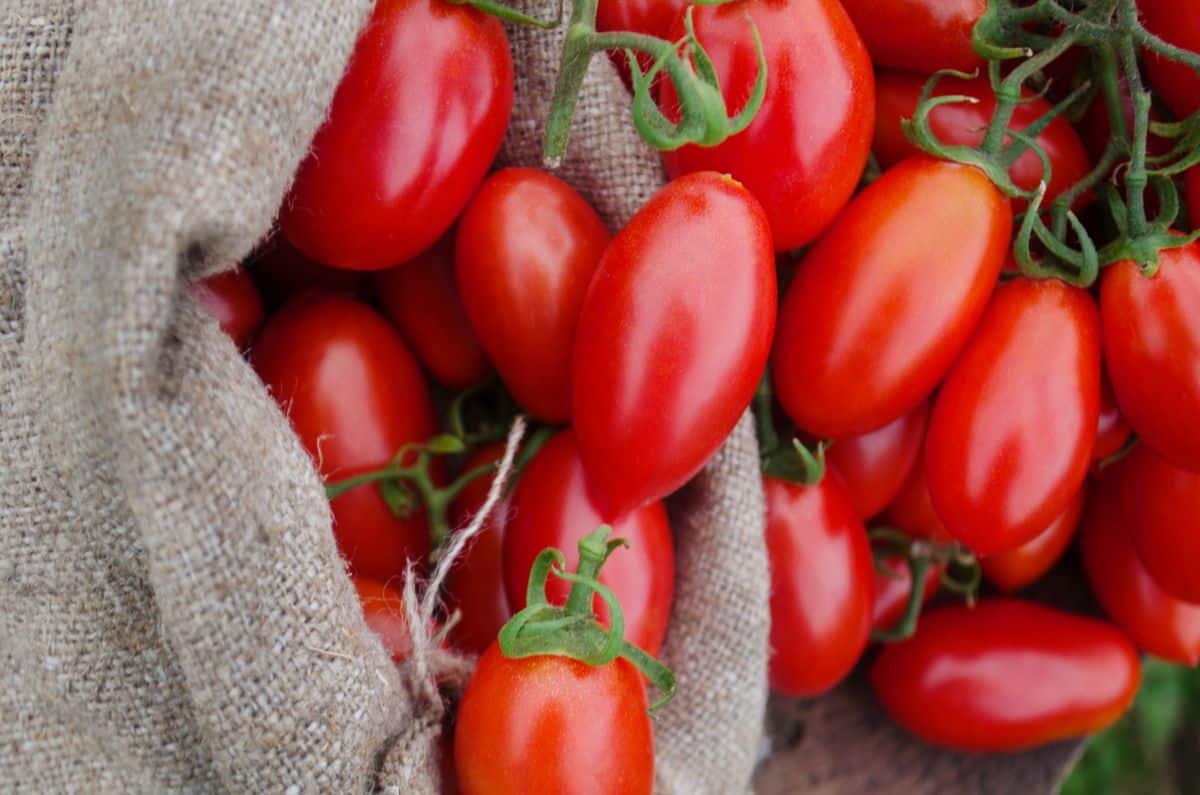
First developed in Italy, hog heart tomatoes were brought to the United States at the beginning of the 20th century and have been impressing growers ever since. Oblong fruit sometimes develops into a heart shape and can grow quite large. While some hog hearts have weighed in at over 3 pounds, most stay much smaller and are often shaped like banana peppers.
Meaty flesh and a small seed cavity makes these tomatoes simple to can with. Hog hearts are also delicious fresh, and they freeze well too. A hardy tomato type, except in extremely cold spots, these are indeterminate growers, so they should have ample support in the garden.
13. Orange Icicle
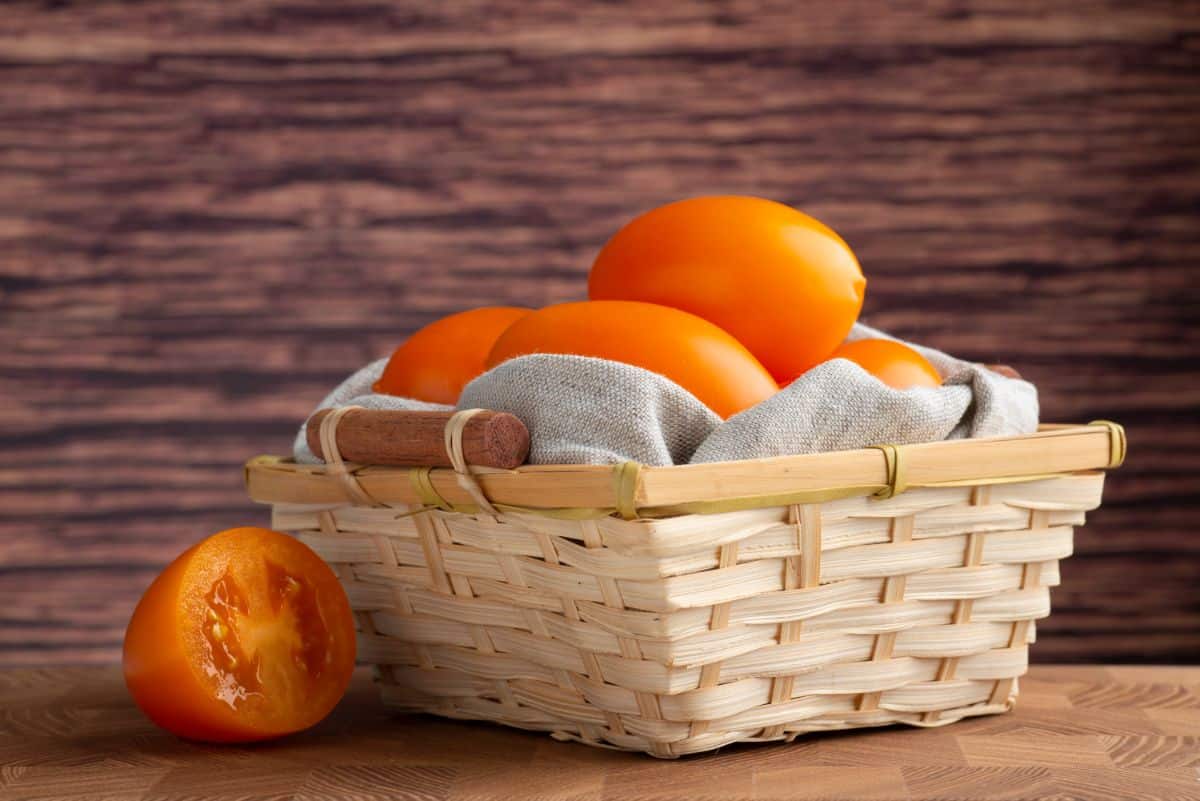
For something a bit different, orange icicles are a fun tomato to keep. These slender and long paste tomatoes have orange flesh to add color to your canning jars. They also work well in fresh-made salsas and you can even turn them into a homemade orange ketchup!
Flesh is rich and sweet with a slight citrus flavor that adds an intriguing note to any recipe. Just keep in mind that these tomatoes often have lower acidity levels than other tomato types. For food safety, orange icicles should be pressure canned or canned with lemon juice or citric acid to make certain your acidity levels are adequate.
14. Red Rosso Sicilian
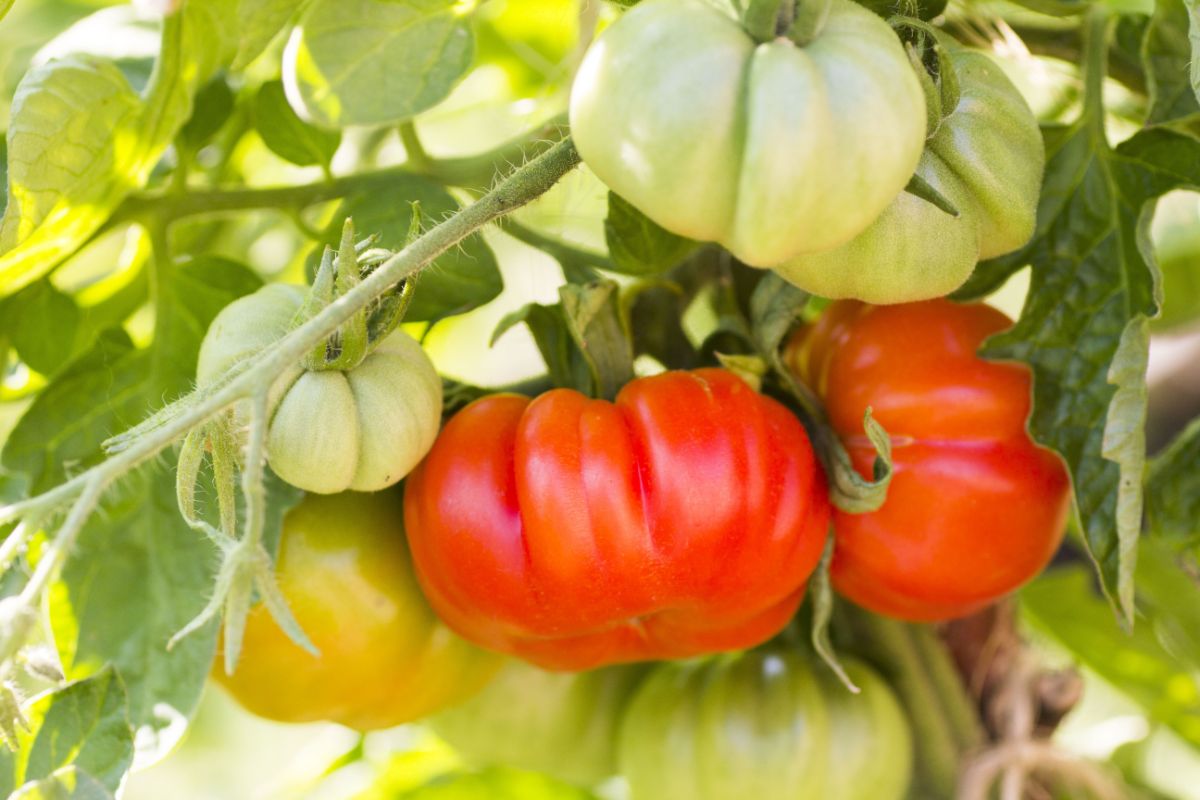
Another Italian classic, this bright red tomato is originally from Sicily. With deeply ribbed flesh, Red Rossos may not look like a standard canning tomato, but their flavor is hard to beat in homemade sauces and tomato paste. The hollow seed cavity and dense meaty texture are other reasons to love this delightful plant.
Plants can take up to 90 days to begin fruiting, but when they do, get ready. These determinate tomatoes produce an abundant harvest all at once, so you’ll need to work fast to get all your canning done. Additionally, the skin on these tomatoes can bruise easily and they need to be handled gently.
15. Super Italian Paste
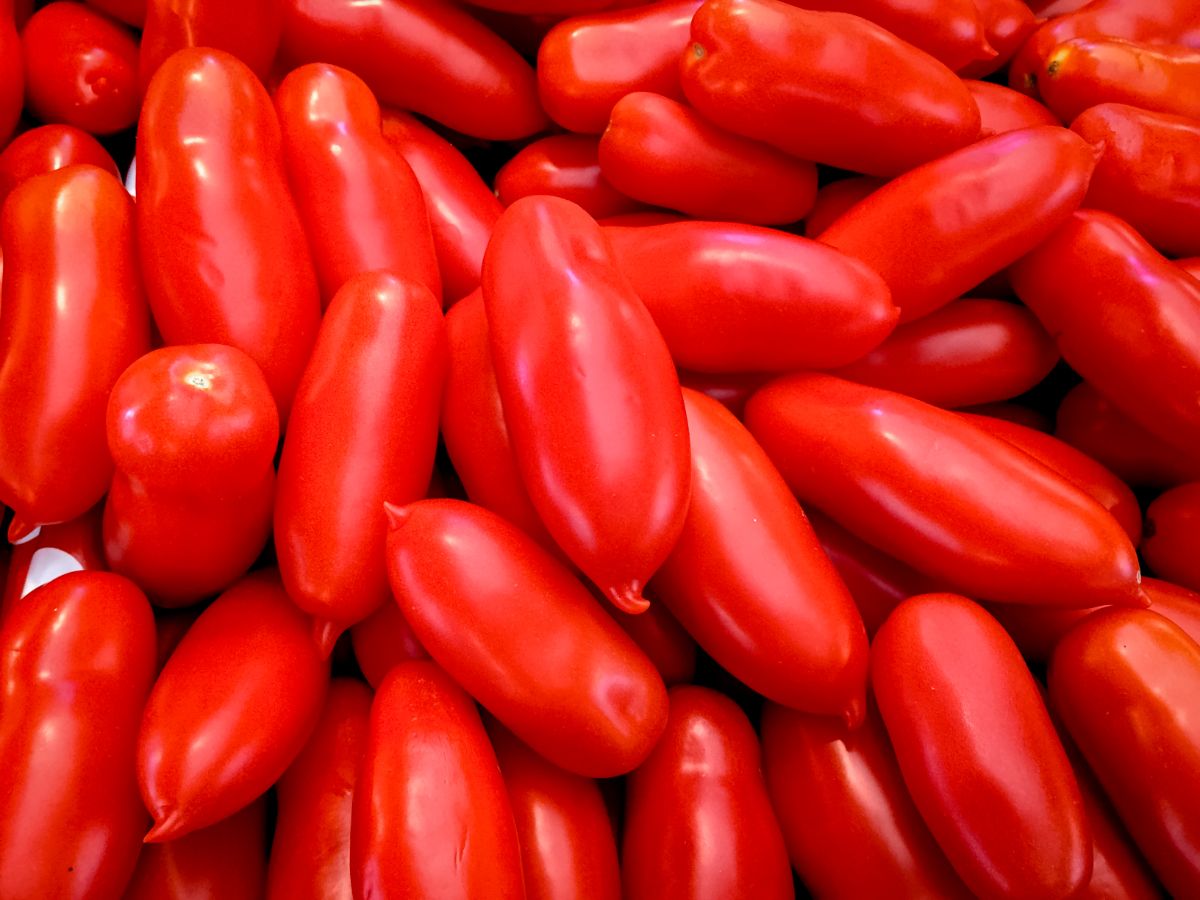
Super Italian Paste tomatoes are a perfect sauce tomato. With red-orange skin and a rich flavor, these tomatoes have low moisture levels and few seeds, which translates into scrumptious homemade sauces. Fruit is oblong and shaped like banana peppers and should be ready to harvest about 73 days after transplanting.
As indeterminate tomato varieties, these heirloom plants should be staked to keep them growing upright and to increase air flow for healthier plants.
Our favorite ways to can tomatoes
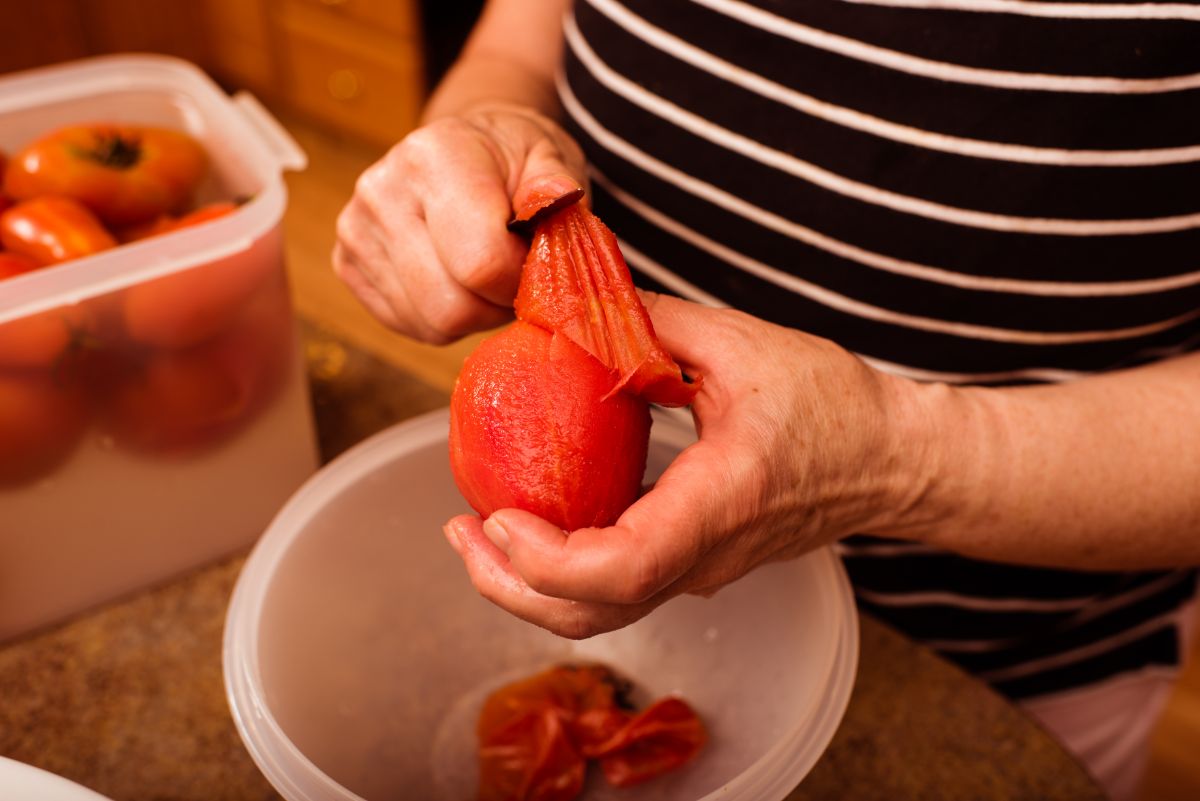
When it comes time to preserve your tomato harvest, there are many different ways to do it. Tomatoes are a very versatile cooking ingredient and can be canned many different ways. Depending on your cooking style, you may want to preserve your tomatoes using several methods to speed up meal prep and add greater versatility to your pantry.
For food safety reasons, canning tomatoes can be a touchy subject. While some other fresh foods have high acid levels and work well with water bath canning, some tomato types are lower in acid. That means they should only be processed with pressure canning or they’ll need additional acid (like lemon juice or citric acid) mixed into recipes.
Choosing only ripe, unblemished tomatoes can help keep acid levels higher as well. This is because mold and microbes can alter tomato acidity, so for a better product, only use the best tomatoes. After all, the quality of your canned goods is directly determined by the ingredients you use.
Whatever method you choose, be sure to reference a reliable canning recipe and follow it closely. When in doubt, the Ball Book of Canning and Preserving is a fabulous resource with hundreds of safe and tested recipes to try. But to help inspire you with your canning, some of the best ways to process your homegrown tomatoes include:

- Canned whole or half tomatoes.
The most versatile way to store your tomato harvest, canned whole or half tomatoes can be mixed into tons of recipes. You can chop them or blend them up into homemade sauces and curries. You name it!Prior to preserving, tomatoes should be peeled and cored. Depending on your taste, you can decide to can your harvest in tomato juice or water or without any added liquid. Either way, adding an acidifier (like citric acid) is recommended. - Canned diced or crushed tomatoes.
Perfect for mixing into soups and chili, canned and crushed tomatoes may take a bit more work to process, but they cut down on meal prep later on. While these methods of preserving are similar, crushed tomatoes are heated and mashed, while diced tomatoes are finely cut by hand.
For even more flavor, stewed tomatoes are the way to go. Unlike whole or crushed tomatoes, stewed tomatoes are usually pre-cooked with added spices for richer tastes. Once canned, stewed tomatoes can be mixed into many different recipes, including chili.
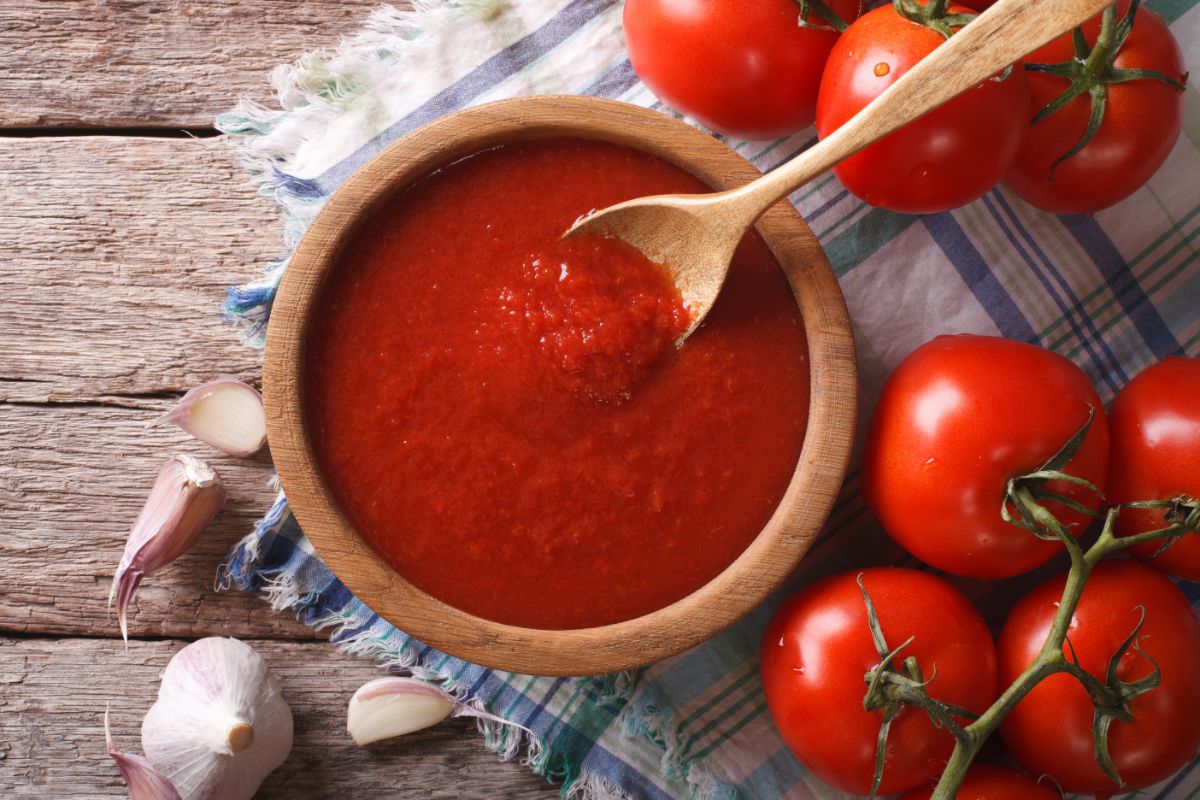
- Tomato spaghetti sauce.
Of course, you can’t go wrong with homemade spaghetti sauce. You can choose to add meat or go vegetarian, but meat sauces always need to be processed with pressure canning methods.
While they may at first appear quite similar, there’s a big difference between pizza and spaghetti sauce. That is, the tomatoes in spaghetti sauce are pre-cooked but they are more raw in pizza sauces. This difference in preparation changes flavors significantly.
If you love V8 juice, or simply adore that rich tomato flavor, try making your own canned tomato juice. Once prepared, tomato juice can be sipped plain or mixed into cocktails like Bloody Marys.
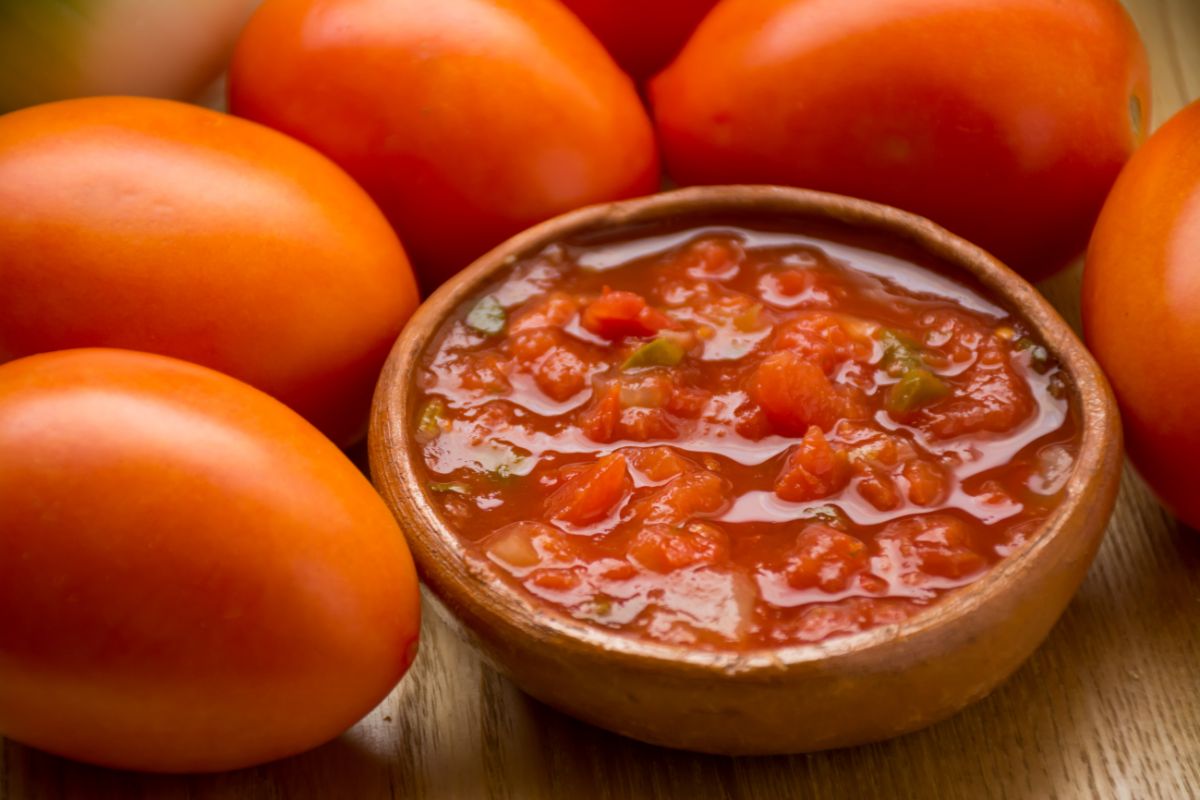
A classic salsa contains a variety of ingredients but, generally speaking, tomatoes, peppers and onions are all must-haves. Depending on how much heat you like, you can easily vary which types of peppers you use for a spicier salsa. If you don’t like spice, opt for bell peppers; if you love fiery flavors, mix in some habaneros.
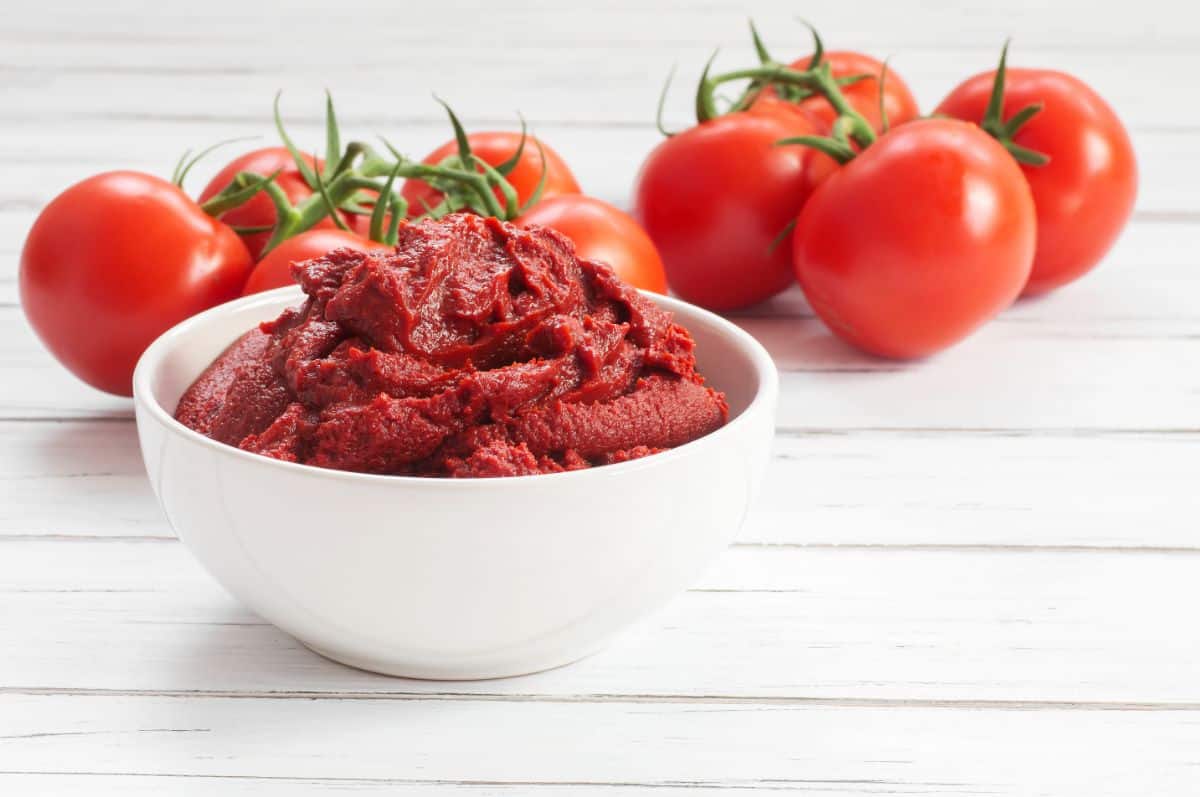
Tomato paste has a denser flavor, which is created by cooking down and further reducing watery tomato sauce. This rich savoriness makes paste a useful ingredient for packing in tons of tomatoey taste.
There’s nothing like a hot cup of tomato soup and a gooey grilled cheese sandwich on a cold winter’s day. While storebought soup is fine, it doesn’t hold a candle to homemade canned soups. For richer flavors, be sure to mix some cream into your soup when warming it up.
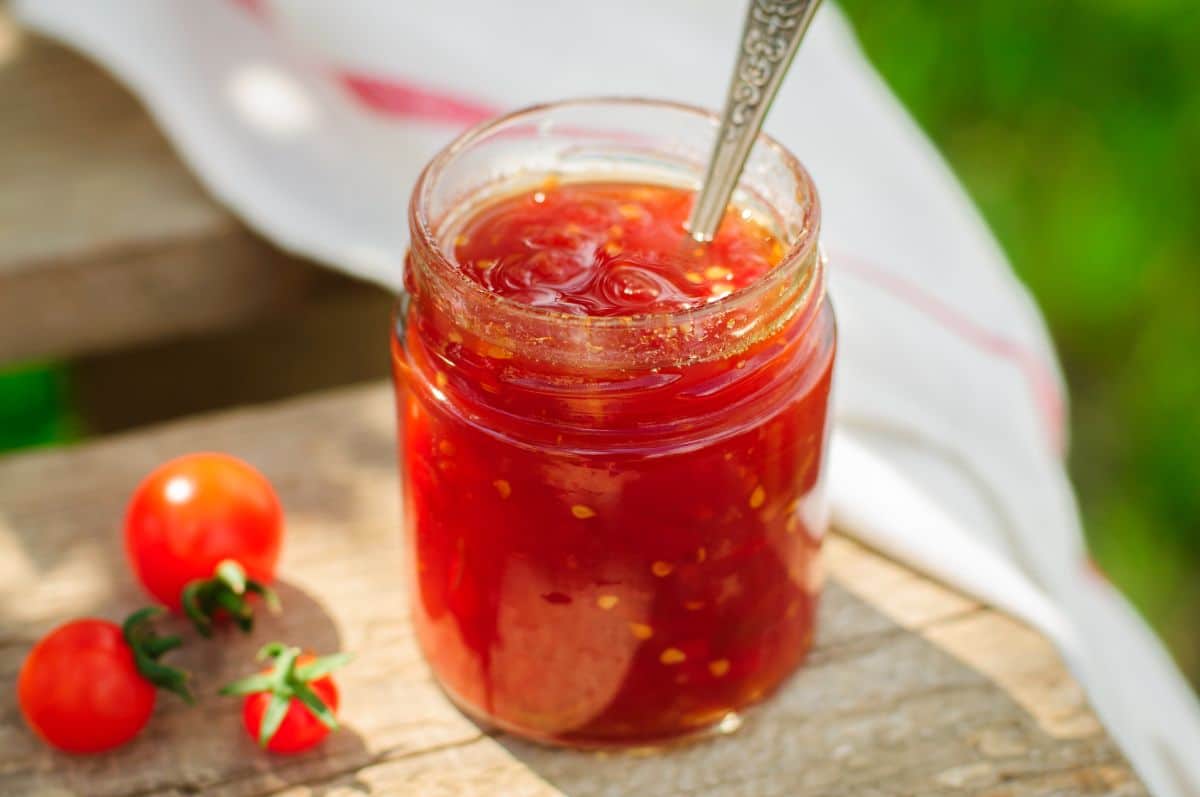
A sweet and savory condiment that makes a delicious breakfast treat on toast, tomato jam is reduced on your stove prior to canning. This removes much of the moisture and creates a nice, thick jam.
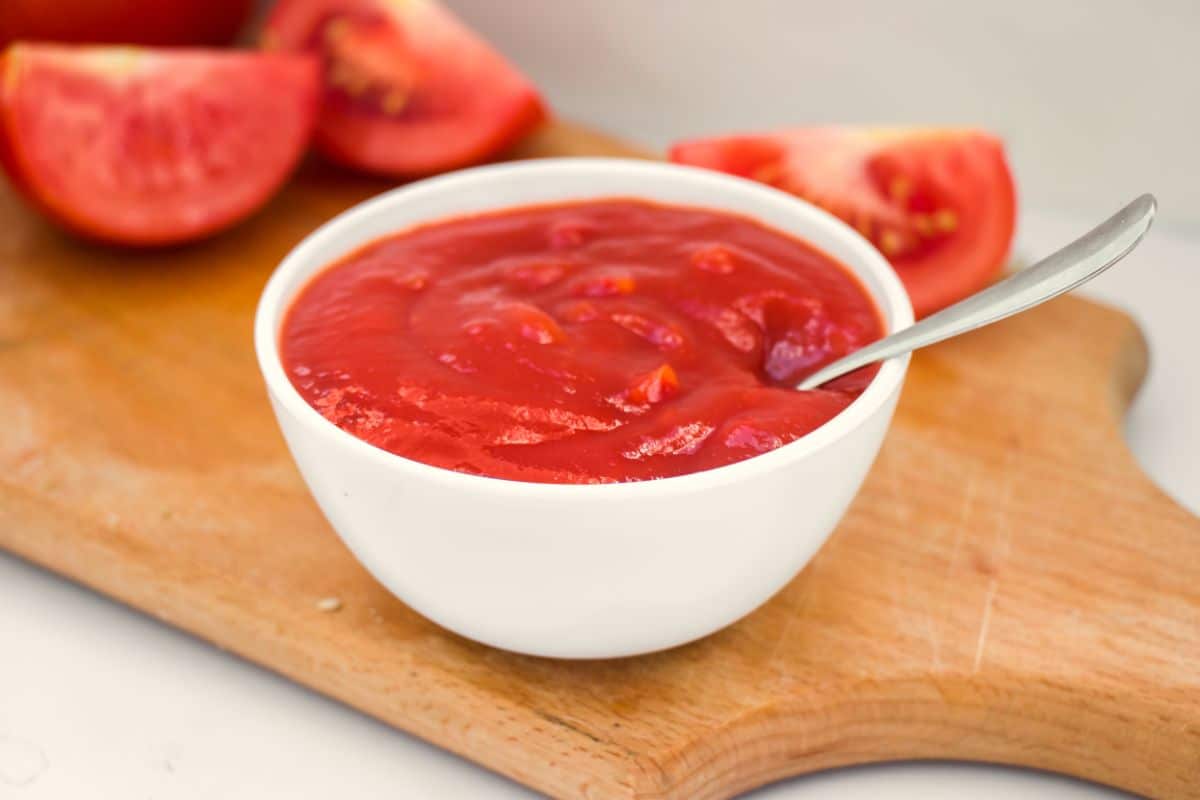
Of course, you can’t forget the classic condiment: ketchup. While you may not think of it at first, ketchup is actually very easy to make at home. You can even substitute yellow or orange tomatoes for even more color!
If you’re looking for even more ways to use up your tomato haul, try dehydrating your own homemade sundried tomatoes or lacto-ferment tomatoes for an extra probiotic punch. If you’re surprised by an early frost, green tomatoes can also be canned sliced or blended into a savory piccalilli relish.
Frequently asked questions
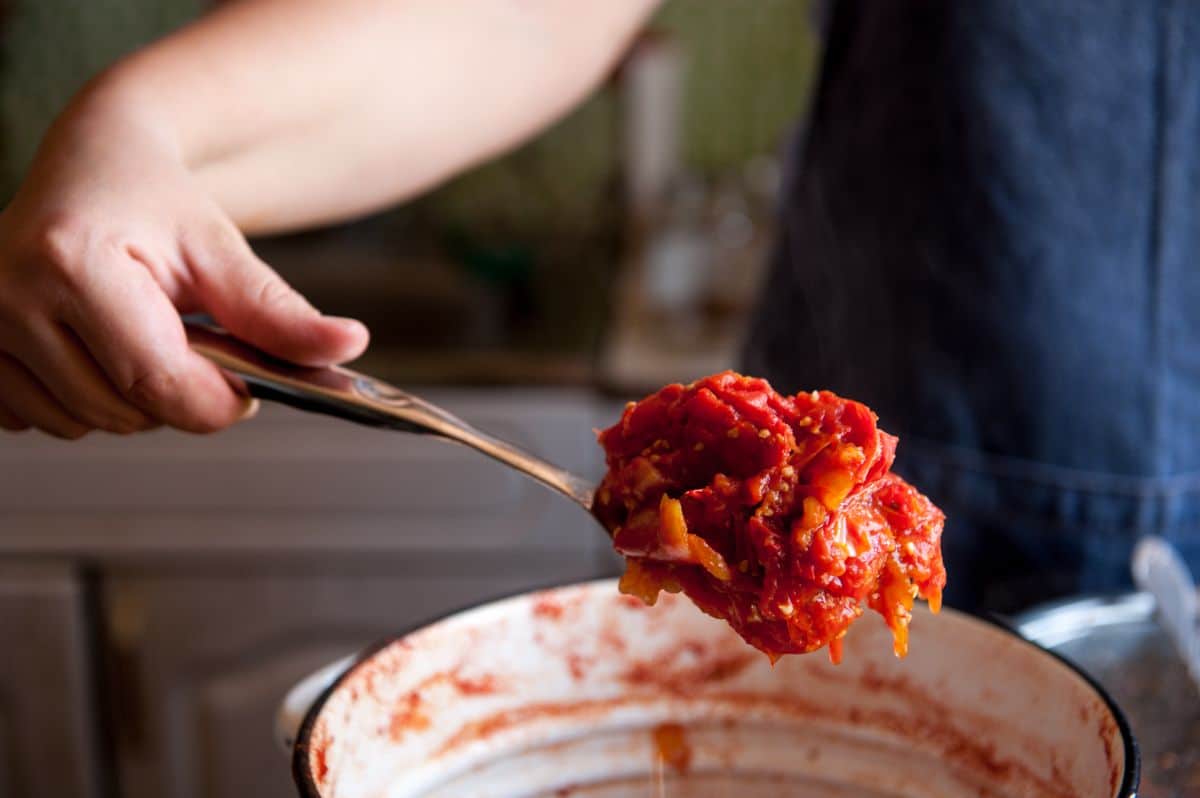
Pretty much any tomato type can be used for canning, but certain qualities make some tomato varieties better suited for this preservation method. Since beefsteak tomatoes are quite meaty, with a low moisture content, they can work very well in canned recipes.
Many growers choose to keep determinate tomatoes for canning. This is because determinate tomato plants produce most of their harvest in a short period of time, which can simplify the canning process. Indeterminate tomatoes can be harvested throughout the growing season, so they are better for small batch canning.
Absolutely! Due to their size, thick skin, meaty texture and low seed count, Roma tomatoes are some of the best tomatoes to grow for home canning.
Paste tomatoes are ideal for making homemade tomato sauces. Some great choices include Roma VF, San Marzano and Amish Paste.
Paste tomatoes like Amish Paste, Big Mama and Roma VF all make stellar salsas. These tomatoes have low moisture levels and minimal seeds, which makes processing them super simple.
Summary
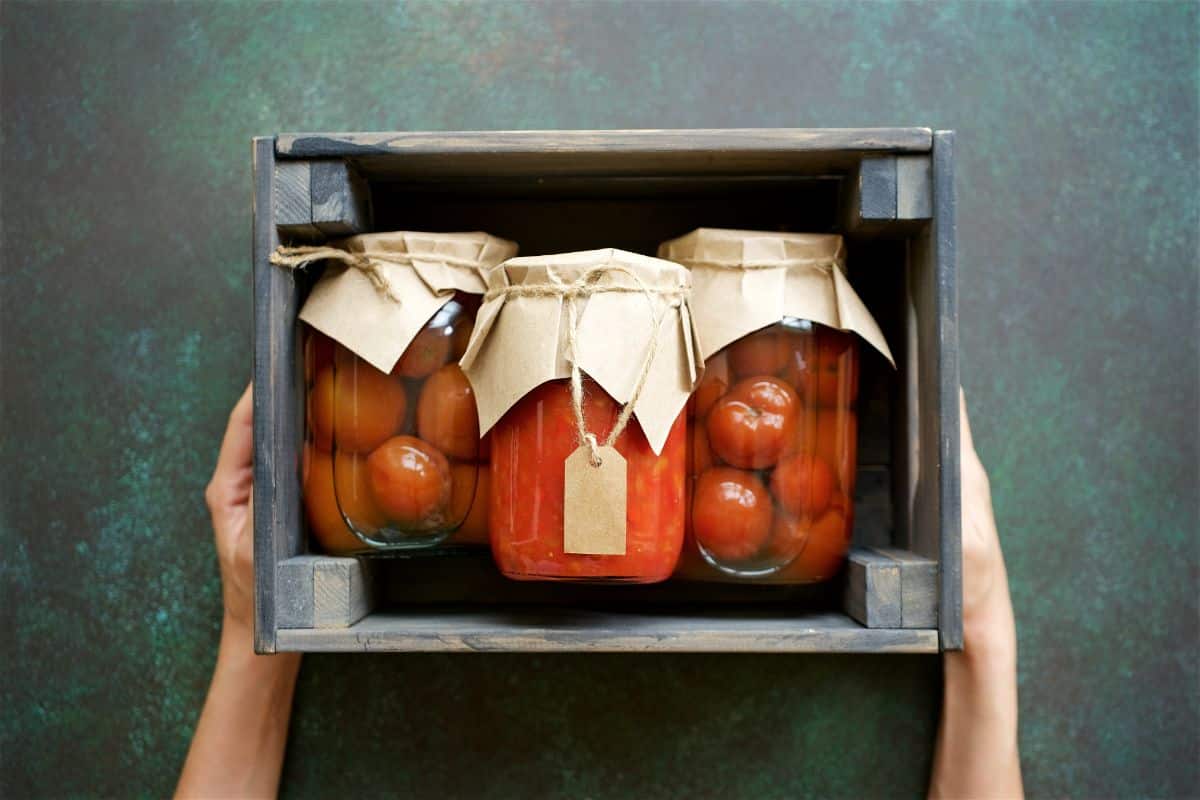
Canning tomatoes at the end of the season can be fun and incredibly rewarding. But if you start out with the right tomatoes for canning, you’ll make your home canning process that much easier and produce even tastier canned goods.
Due to their moisture levels, texture and flavor intensity, plum tomatoes are some of the best tomato types for canning. However, other heirloom tomato varieties make delicious, canned sauces and preserved goods too. And don’t forget, just because they’re called “canning tomatoes” doesn't mean they don’t make tasty slicers too!
If you liked this article, check out our piece on the best heirloom tomatoes to grow for fresh eating or learn how to preserve green tomatoes with these 20 creative recipes.

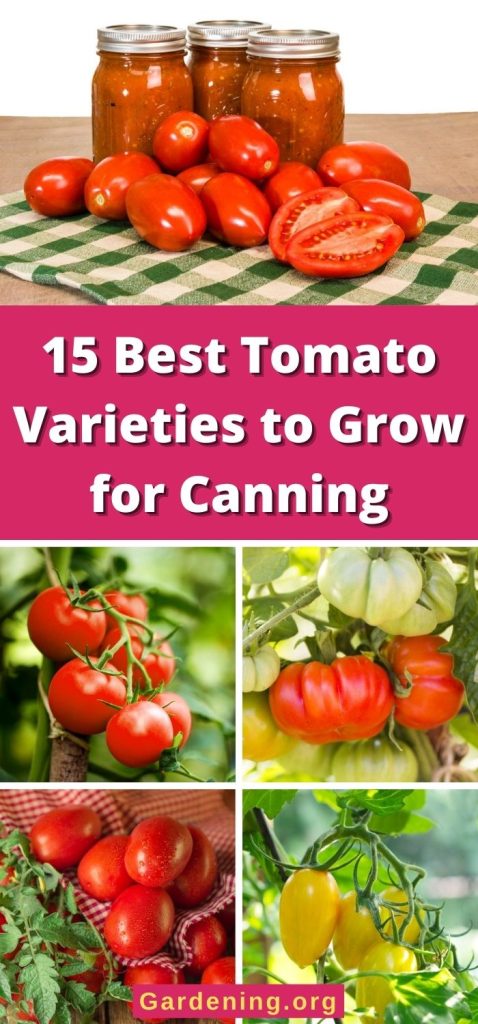
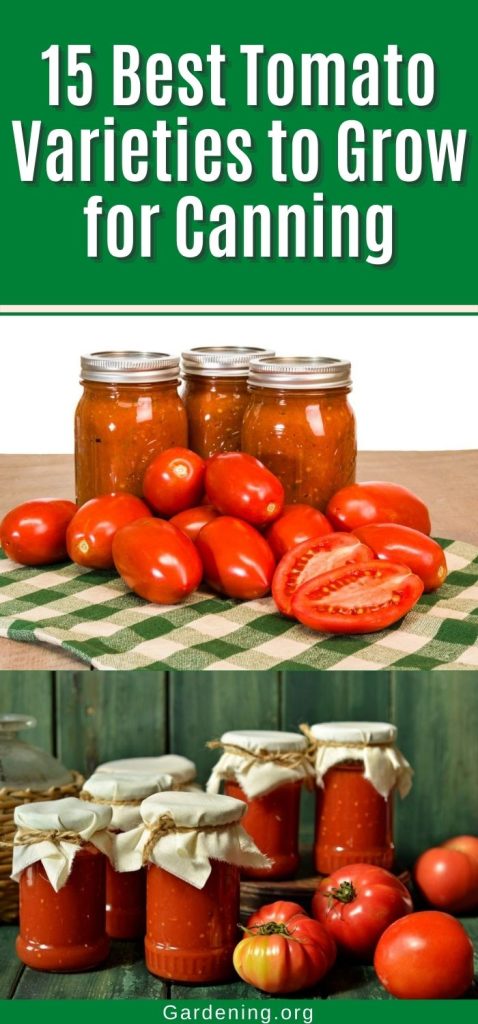
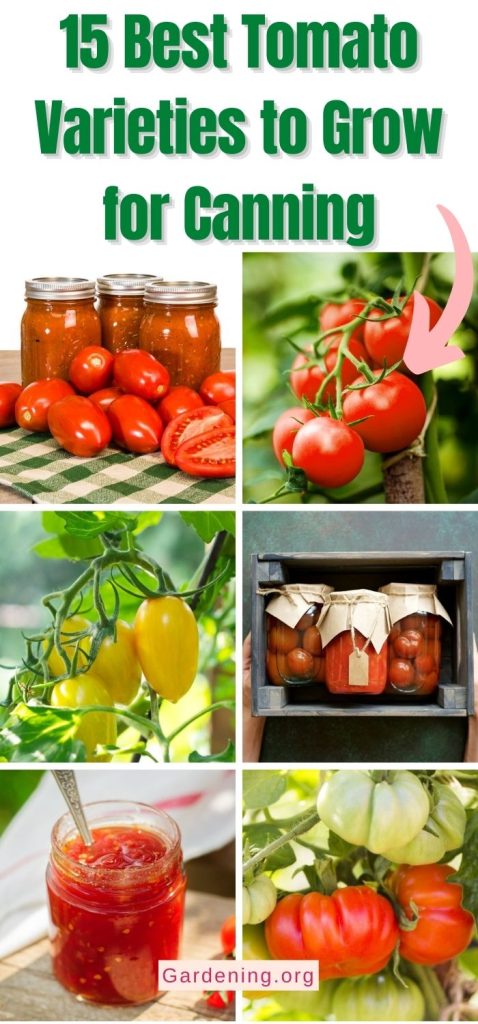
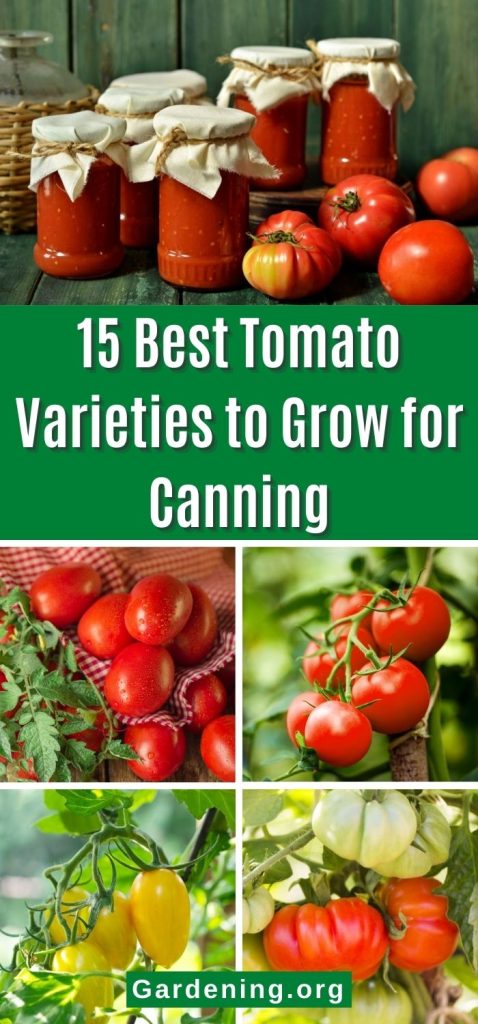
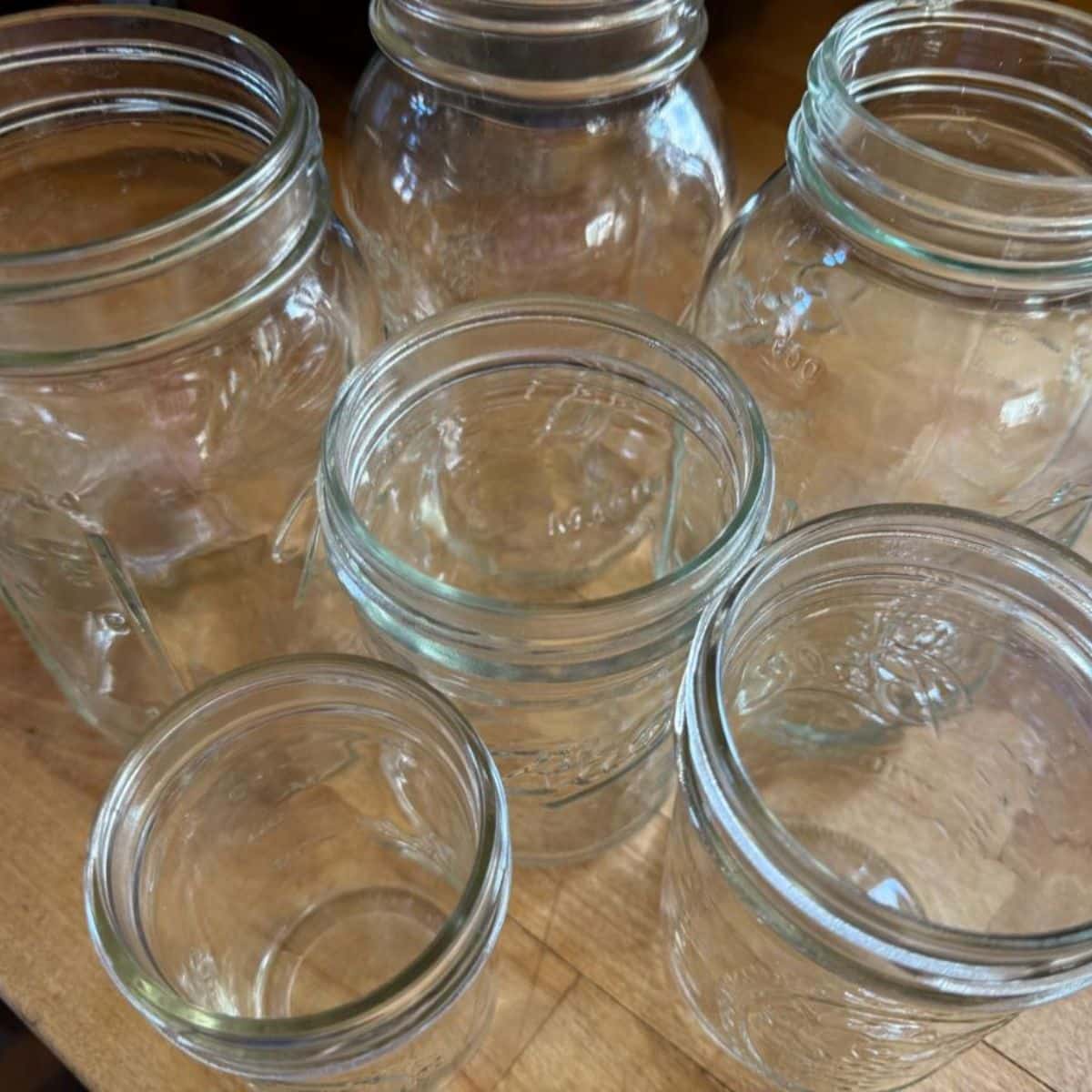
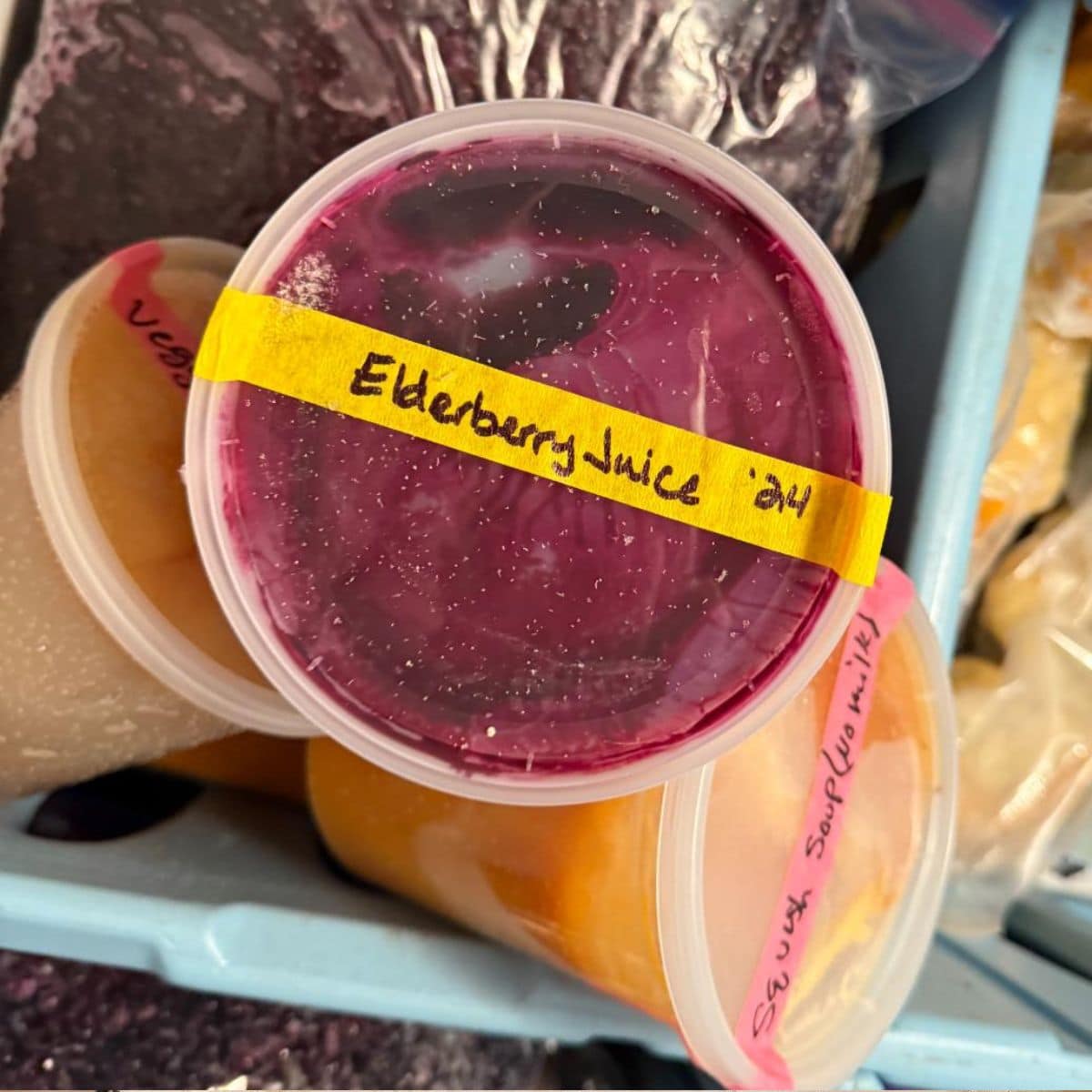
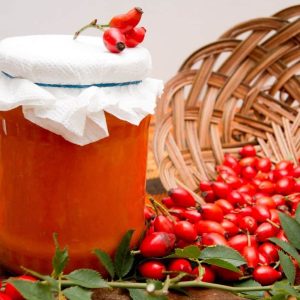
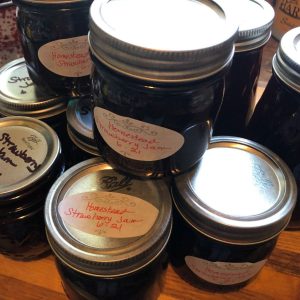
FeFe Johns
Just wished I knew how to can any veggie ♥️
Mary Ward
There are many good resources online. I highly suggest the Ball Guide to canning that is linked in this article. Tomatoes are one of the easier vegetables to learn to can, too.